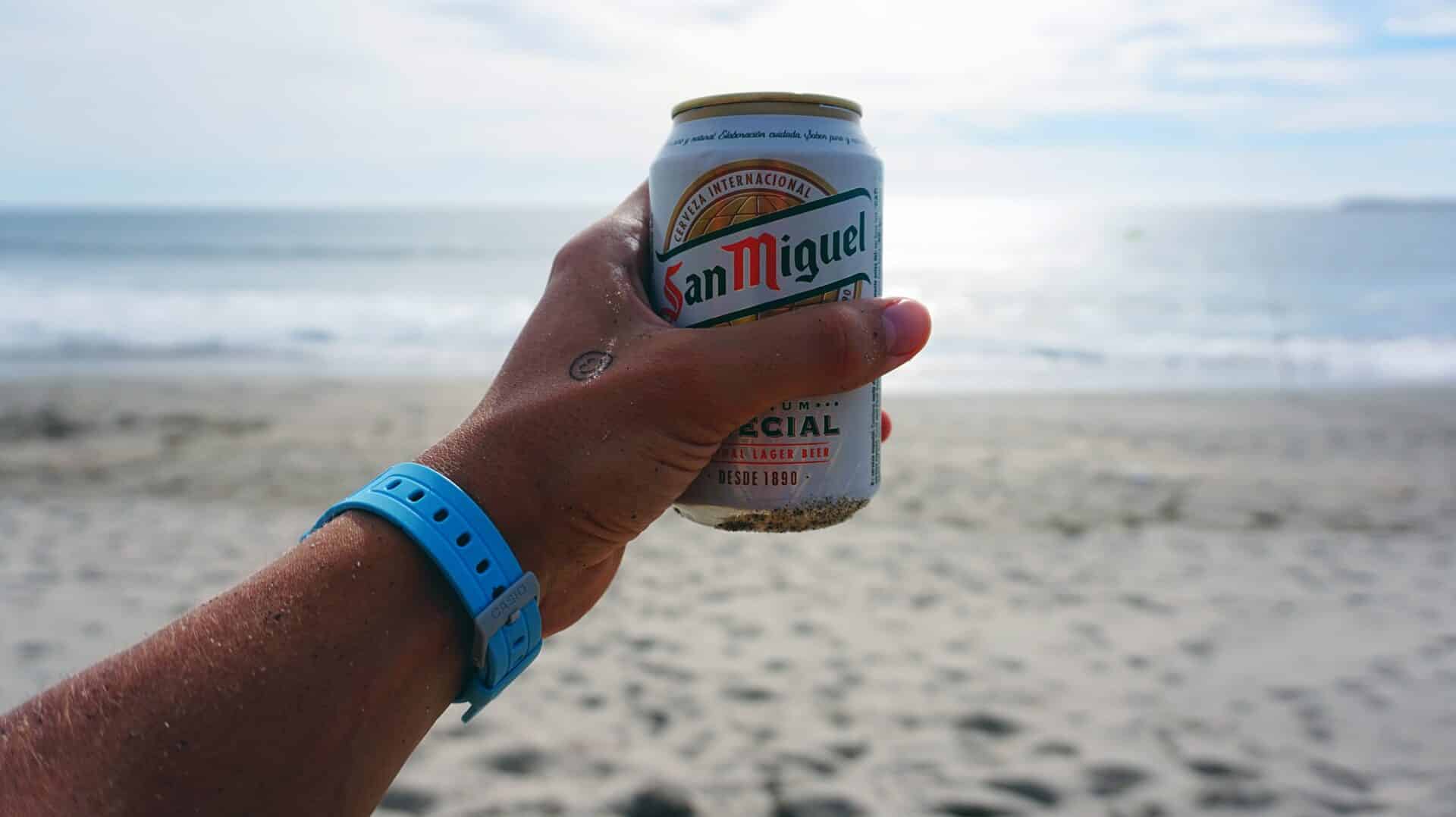Can you distill sea water? The answer is yes, it is possible to distill sea water. Distillation is a process that can be used to separate contaminants from water, including salt and other minerals. By using heat and condensation, the liquid and solid components of the water can be separated. This makes it possible to create clean, drinkable water out of saltwater, making it an invaluable tool in areas with limited access to fresh drinking water.Yes, it is possible to distill sea water. Distillation is a process that involves boiling the water and collecting the steam that is produced. The steam can then be condensed back into liquid form, leaving behind any impurities that may have been present in the original water. This process can be used to purify sea water and make it safe for drinking.
What Is the Process of Distilling Sea Water?
The process of distilling sea water involves boiling the water and then condensing the steam back into liquid form, thus removing impurities such as salt. This process is often done with a distillation apparatus, which is designed to ensure that only pure water vapor is collected. The apparatus consists of a boiler, a condenser, and a receiver. The boiler heats up the sea water until it boils, releasing vapor which rises up and enters the condenser. The condenser cools down the steam, allowing it to condense back into liquid form, which then flows into the receiver. Any impurities such as salt are left behind in the boiler.
The receiver contains pure distilled water which can be used for drinking or other purposes. It is important to note that although this process removes most impurities from sea water, it does not make it safe for drinking without further treatment. Distilled sea water can contain bacteria or other contaminants that need to be removed before drinking it. Boiling distilled sea water will make it safe to drink by killing any bacteria present in it.
Benefits of Distilling Sea Water
Distilling sea water is a process that has been used by humans for centuries to make seawater drinkable. Distillation is the process of boiling seawater, which causes the water to evaporate and leaving behind the salts and other minerals. The pure steam produced can then be collected and condensed, producing fresh, drinkable water. This process is not only used to make drinking water but also has many other benefits.
The first benefit of distilling sea water is that it helps remove some of the toxic elements from the water. This can be very useful in areas where there is a high concentration of pollutants in the ocean, such as industrial zones and ports. By removing these pollutants from the water, it can reduce health risks for people who rely on drinking seawater for their daily needs.
Another benefit of distilling sea water is that it can help reduce costs associated with desalination plants. Desalination plants are often quite expensive to operate as they require large amounts of energy to convert seawater into drinking water. By distilling seawater instead, these costs can be greatly reduced as less
Requirements for Distilling Sea Water
Distilling sea water is a process used to separate the salt and other minerals from sea water. In order to do this, there are certain requirements that need to be met. The most important requirement is the availability of an appropriate distillation unit. This unit needs to be able to withstand the corrosive effects of salt and other minerals in the sea water. It also needs to be able to handle large volumes of water at one time in order to achieve a high degree of purity in the resulting distilled water.
Another requirement for distilling sea water is that it must be done in a safe manner. This means that any potential contaminants or hazardous chemicals that are present in the sea water must be removed or neutralized before the process begins. This can involve using special filters or chemical treatments before the distillation takes place.
The final requirement for distilling sea water is that it has to be done correctly and with precision. If any part of the process is not done correctly, then this can lead to contaminated distilled water or even worse, an explosion due to improper handling of flammable materials. Proper safety protocols should always be followed when working
Distillation
Distillation is a process of separating liquids from their constituents by heating them, cooling them, and collecting the condensed vapour. This process is used for many purposes, such as water purification and the production of alcoholic beverages. The basic principle behind distillation is that different substances have different boiling points, which can be used to separate them. In distillation, the liquid mixture is heated to a temperature that causes the most volatile compound to vaporize. The vaporized liquid is then collected in a separate container and cooled to its condensation point. This condensed liquid can then be separated from the other components of the mixture.
How Does Distillation Work?
Distillation works by capitalizing on differences in boiling points of different compounds in a given mixture. When heated, more volatile compounds will vaporize first while less volatile ones will remain in liquid form. As the vapors rise up through the distillation column they are cooled by condensers, which cause them to return to their liquid state again. The resulting liquid is then collected separately from the other components of the mixture. By repeating this process several times, it’s

Advantages of Distilling Sea Water
Distilling sea water is an effective way to purify and desalinate it for drinking, hygiene, or agricultural uses. The process involves boiling the water until it turns into steam, which then condenses back into liquid form as pure, clean water. One of the primary advantages of this method is that it eliminates all contaminants and pollutants from the water. This includes bacteria, viruses, heavy metals, and other harmful substances that can be found in ocean water. Additionally, the process also removes salts and minerals from the water, making it much safer to drink and use for other purposes. Another major advantage is that the distilled water has a longer shelf life than unfiltered ocean water or tap water.
Disadvantages of Distilling Sea Water
The main disadvantage of distilling sea water is that it requires a large amount of energy to complete the process. Boiling large volumes of seawater requires considerable fuel sources such as electricity or natural gas. Additionally, depending on how much seawater needs to be distilled at once, the process can take several hours or even days to complete.
Steps Involved in Distilling Sea Water
Distillation is a process of separating a liquid from any other materials that may be dissolved in it. Distillation is the process used to purify and desalinate sea water, making it fit for human consumption. The steps involved in distilling sea water are as follows:
1) Collecting the sea water: The first step involves collecting sea water from the natural environment. This can be done using a bucket, pipe, or any other type of container that can hold the required amount of water.
2) Boiling the sea water: Once the required amount of sea water has been collected, it is boiled in order to evaporate out any impurities or contaminants present in it. The boiling process helps to separate out any suspended particles and convert them into steam which can then be collected and cooled down.
3) Condensing the steam: Once the steam has been produced, it is then passed through a condenser which helps to cool down the steam and turn it back into liquid form. This liquid form is then collected and
Desalination vs. Distillation
Desalination and distillation are two processes that are used to purify water, but the two processes have some distinct differences. Desalination is a process that removes salt and other minerals from seawater, brackish water, or other salty water sources. This process is often used to make drinking water from seawater or to provide fresh water for industrial purposes. Distillation is a process that separates liquid from solids by boiling the liquid and condensing the vapor produced. This process can be used to make distilled water for drinking, cooking, and industrial uses.
The main difference between desalination and distillation is the type of water they are used on. Desalination is used on saltwater, brackish water, or other salty sources while distillation is used on freshwater sources only. Another key difference between these two processes is the type of impurities they remove from the water; desalination removes salt and other minerals while distillation removes organic compounds such as bacteria and viruses.
The cost of desalination compared to distillation also varies greatly due to the complexity of the process. Desalination requires more

Conclusion
It is possible to distill sea water in order to obtain freshwater. This process has been used for centuries and is still being used today in order to provide freshwater for many people living in coastal regions. Although the process may seem simple, there are a few critical components that must be taken into account, such as the type of still used and the presence of impurities in the sea water. Distilling sea water can be an effective way to obtain freshwater, but it must be done with great care and with an understanding of the inherent risks involved.
Overall, distilling sea water is a viable option for obtaining freshwater, particularly for those living in coastal regions or areas with limited access to fresh sources of water. However, it is important to understand the process involved and any potential risks associated with it before undertaking this task. By taking all these factors into account, it should be possible to successfully obtain fresh water from seawater using distillation.

